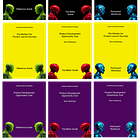Optimal Resource Allocation with AI
Don't Copy. Rebuild. AI-Enhanced Decision Making
Most teams allocate resources by copying what worked before or following industry norms. First principles thinking breaks decisions down to fundamental truths, revealing better allocation strategies
A Workshop Kit is available for this article. Not yet a Coach-level Subscriber? Find out about the Brandable Workshops…
In-short
Most teams allocate resources by copying what worked before or following industry norms
First principles thinking breaks decisions down to fundamental truths, revealing better allocation strategies
The Problem You're Actually Solving
Your cross-functional team just got budget approval for three new initiatives, but you can only fund two. Marketing wants the customer analytics platform they've been researching. Engineering is pushing for the infrastructure upgrade, they say is "absolutely critical." Product insists the user research tools will unlock breakthrough insights.
Everyone comes armed with competitor analysis, best practice guides, and industry benchmarks. Marketing shows you what competitors are using. Engineering points to what successful startups implemented first. Product shares frameworks from companies that "figured it out."
Three hours later, you're still debating. Each team has compelling evidence that their approach follows proven patterns. You’re not solving your problems, you're solving problems that look similar to yours.
This is the hidden cost of copying instead of thinking from first principles.
🧠 The Thinking Model: First Principles Thinking
What it is: Breaking down complex problems into their most fundamental truths and building up solutions from there, rather than reasoning by analogy or copying existing approaches.
Origin: Popularized by Aristotle as the "first basis from which a thing is known," and famously applied by Elon Musk in business contexts, though the method has been used by breakthrough thinkers for millennia.
Thinking shortcuts:
"What are we trying to accomplish here?"
"If we started from scratch with perfect information, what would we build?"
🤬 Why Your Resource Allocation Sucks (And How to Fix It)
Most teams' approach:
Look at what competitors/similar companies are doing
Find the closest match to your situation
Adapt their solution to fit your constraints
Wonder why results don't match expectations
The First Principles approach:
Define the fundamental problem you're solving
Identify the core constraints and requirements that are actually true
Build the optimal solution from these building blocks
Allocate resources based on your unique optimal path, not borrowed patterns
The 3-Step First Principles Resource Audit
Step 1: Problem Decomposition
Strip away all assumptions about "how things should be done" and identify the core business outcome you need. Instead of "we need better customer analytics like Company X," ask "what specific customer behavior do we need to understand and why?"
Step 2: Constraint Reality Check
Separate real constraints (budget, team size, technical debt) from assumed constraints (industry norms, competitor approaches, "that's how we've always done it"). Most resource allocation fails because teams optimize for fake constraints.
Step 3: Ground-Up Rebuild
Design the solution pathway from your actual constraints to your actual goals. This often reveals resource allocations that look nothing like industry standards, and work far better.

